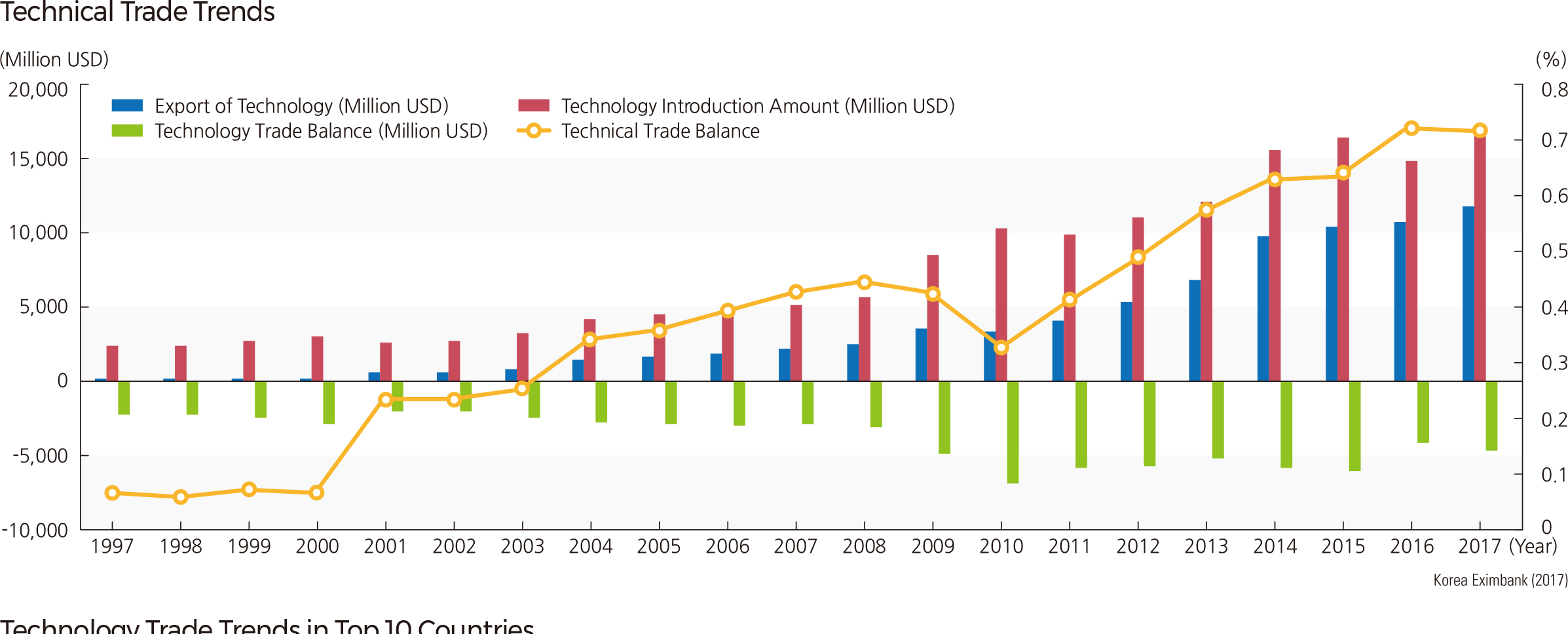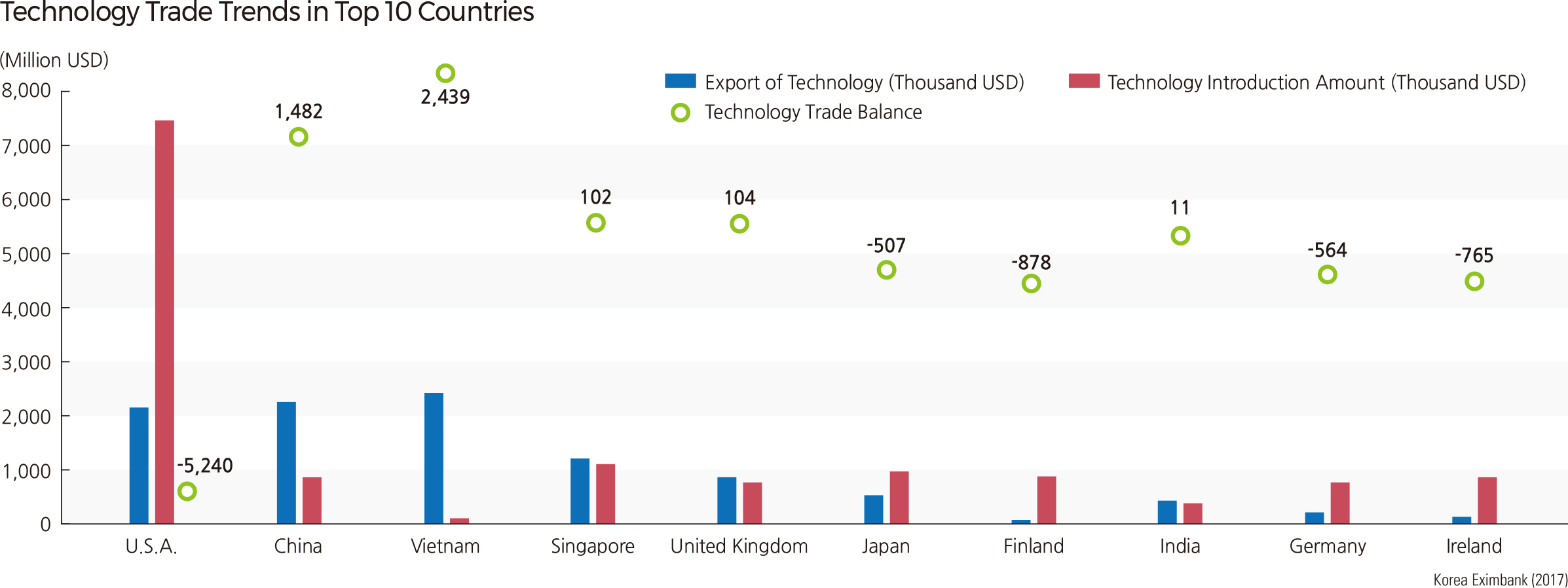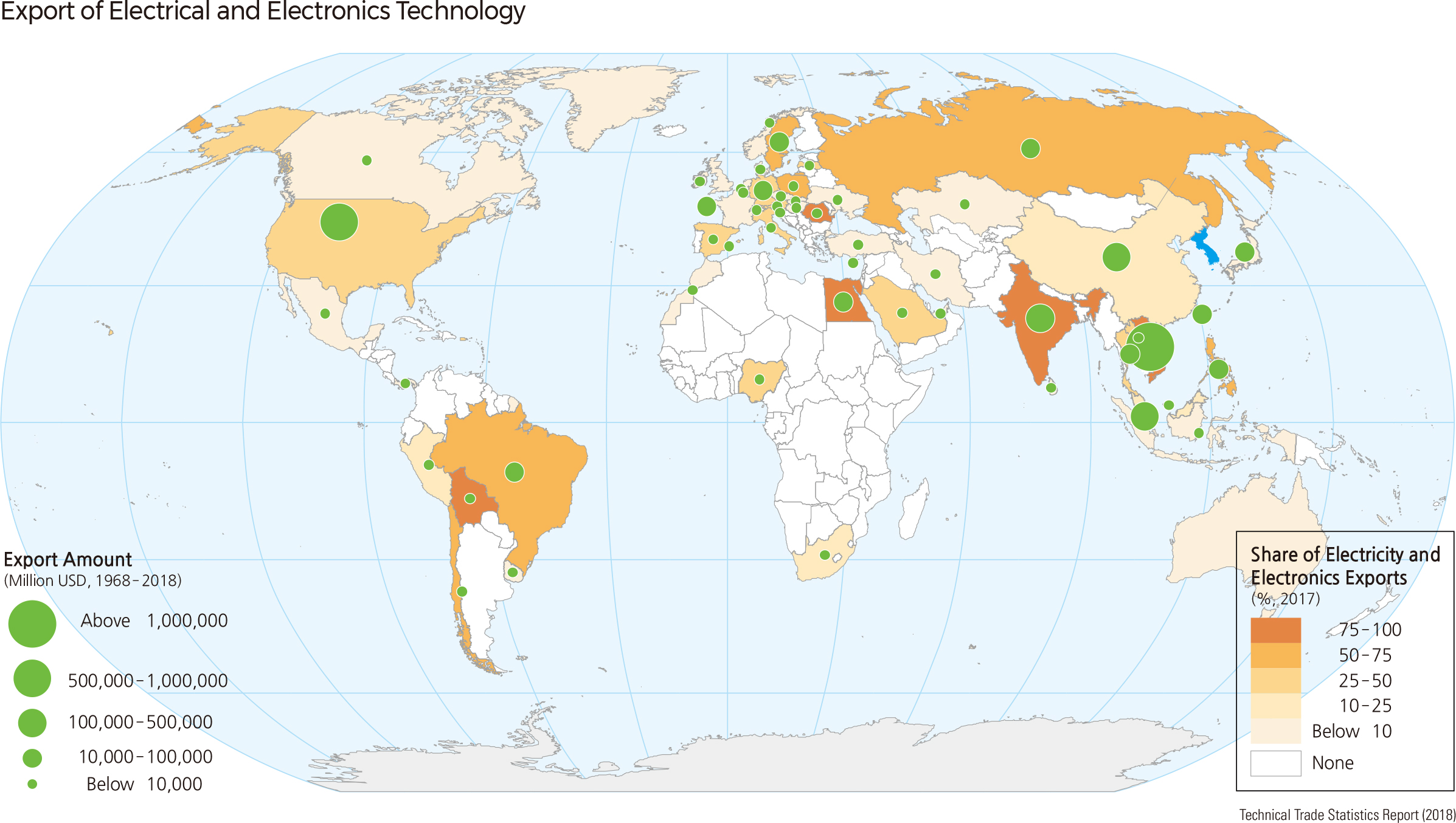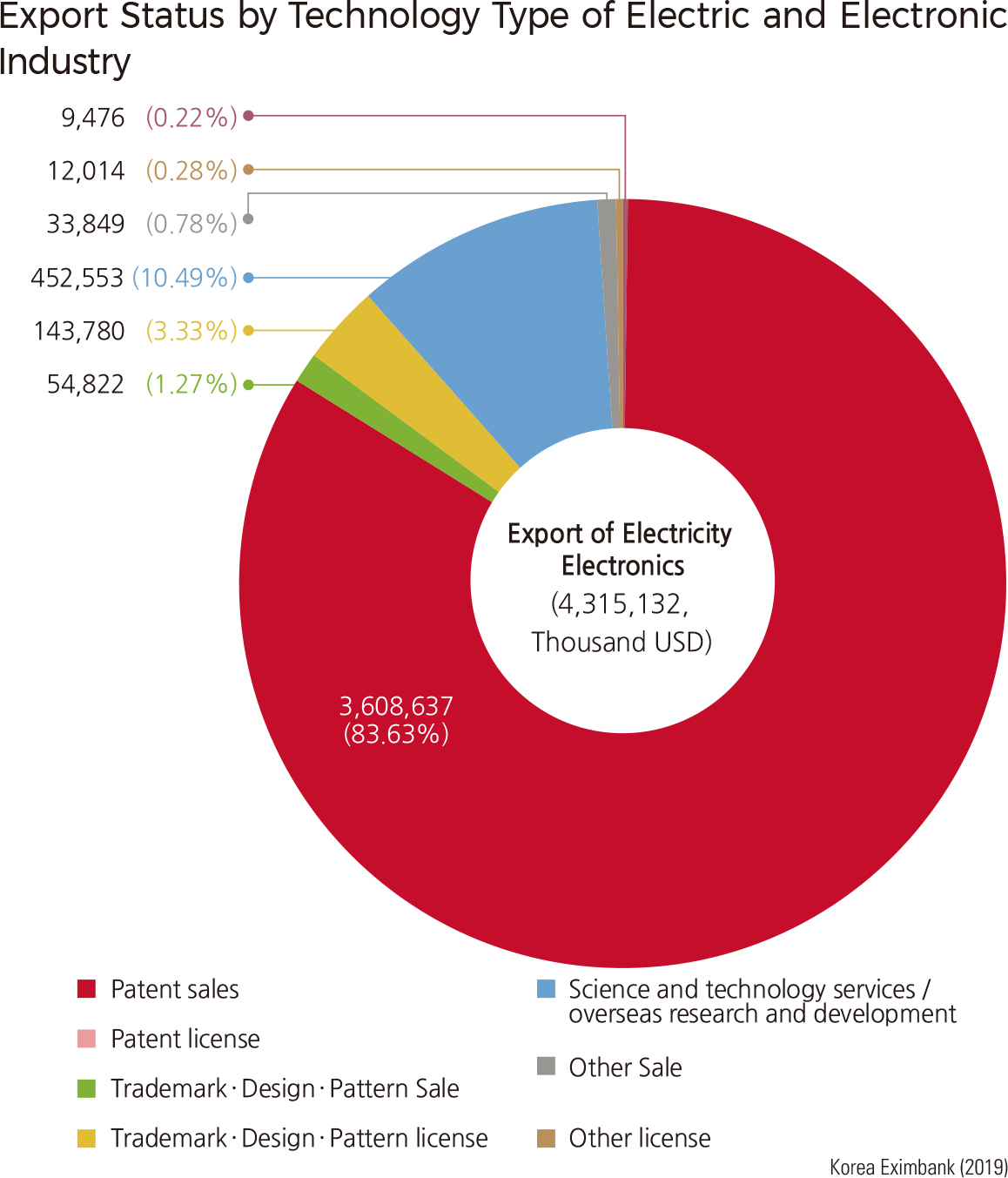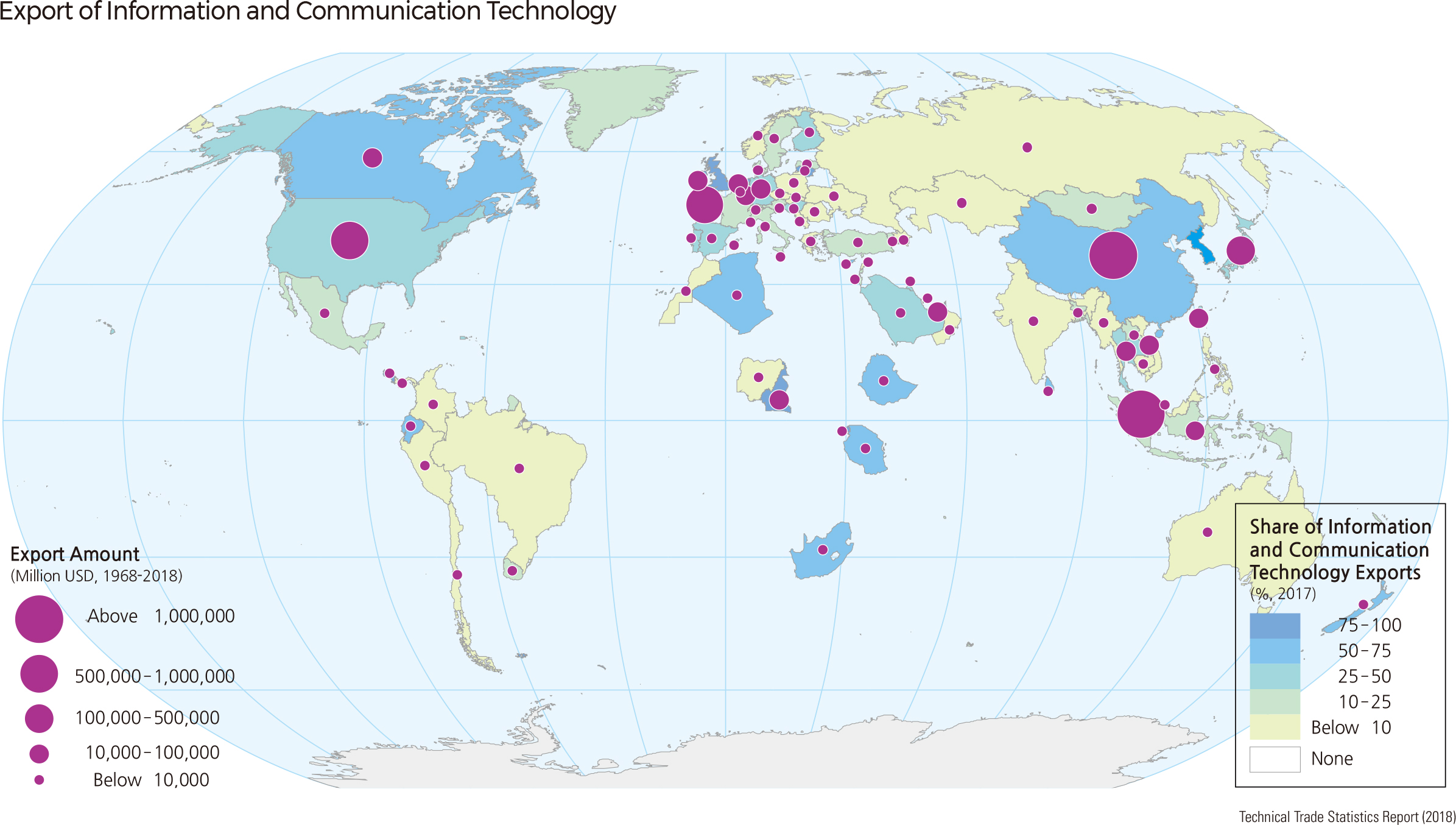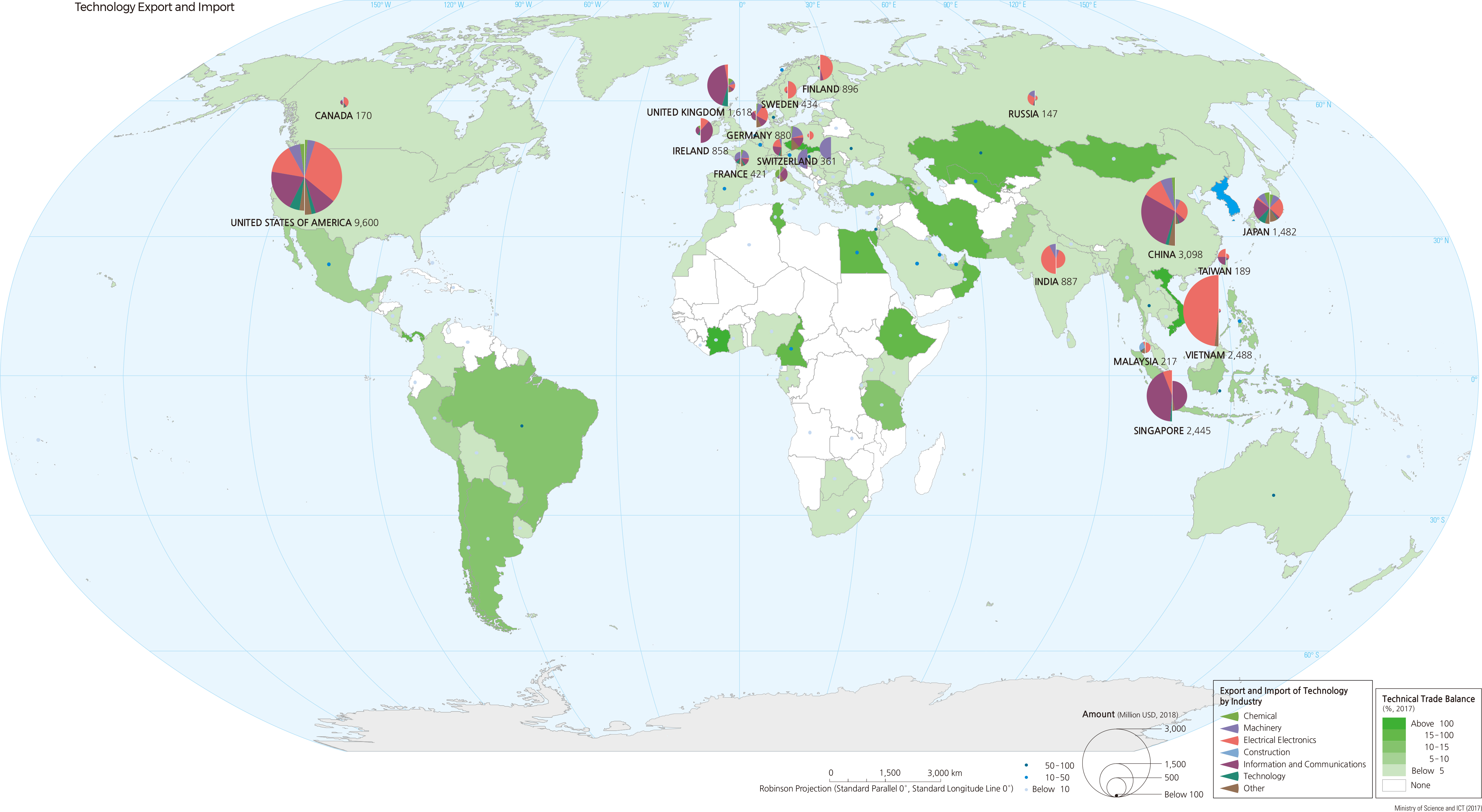English I 2019
The technology balance of payments may be defined as commercial transactions related to international technical knowledge and technology-related services between partners in different countries. It consists of money paid or received for the use of patents, licenses, know-how, trademarks, patterns, designs, technology service, and assistance, and for industrial R&D carried out abroad. It is an important indicator that enables us to measure technology transfer among countries, restructuring in technology and industrial structure, and level of technology in the macro-perspective. In particular, technology balance of payments ratio (technology receipts/technology payments), the amount of money used to purchase foreign technology divided by technology sold to other countries, could be used as an indicator of national technology competitiveness.
The technology balance of payments has increased dramatically since 1997. For example, it increased from USD 2.58 billion in 1997 to USD 28.27 billion in 2017, a growth of over 20 times in 20 years. The amount of technology payments as a percentage of total technology balance of payments increased significantly from 6.3% in 1997 to 41.7% in 2017. Also, the technology balance of payments ratio increased from 0.07 to 0.72 in 2017. In terms of the performance of Korean technology balance of payment by countries, the leading technology trade partners for Korea are the United States, China, Vietnam, Singapore, the United Kingdom, Japan, Finland, India, Germany, and Ireland. Vietnam was the top technology exporting country in 2017, accounting for 99.9% of the technology balance of payments.
Technology payments have increased significantly since the early 2000s. Their volumes have increased dramatically, from around USD 160 million in 1978 to USD 11.8 billion in 2017. Technology payments in Korea have increased by more than 70 times in 20 years. In terms of Korean technology payments by industries, the leading technology exporting industries were the electrical and electronics industry (46.8%) and the machinery industry (19.8%) in the early 1990s. However, the information and communication industry jumped to 39.0%, and the electrical and electronics industry jumped to 36.6% in 2017.
Since the late 1980s, technology receipts have increased along with increases in needs for new technologies as the development of the electrical and electronics industry races forward. The significant increase in the amount of technology receipts has led to the liberalization of technology receipts since the late 1990s. For example, technology receipts as a percentage of total technology balance of payments were 93.7% in 1997. In terms of Korean technology receipts by country, Korea’s technology dependence on Japan was highest until the late 1970s. Since the 1980s, its dependence on the United States has been growing dramatically because of the rapid progress in the introduction of high-tech instruments in the electrical and electronics industry. As a result, in 2017, the percentage of technology receipts from the United States was 45.0%, whereas that from Japan was only 6.0%. |
